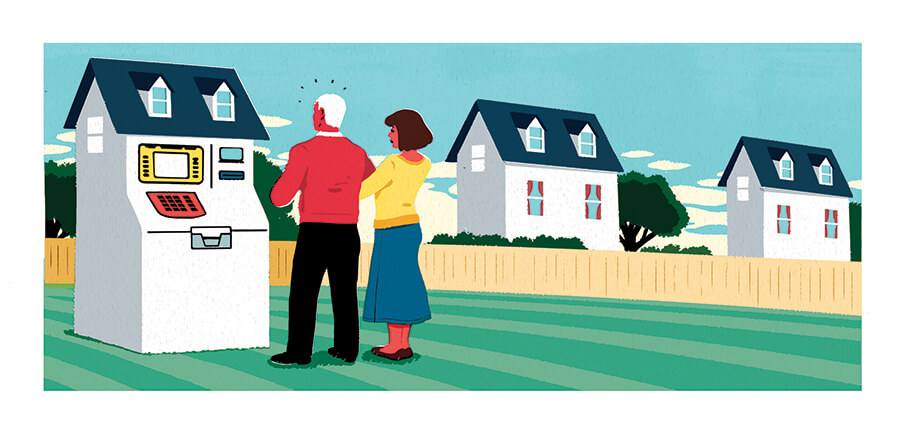Home equity: A retirement fallback plan
A paid-for home is your safety net. What’s the best way to tap into your home equity?
Advertisement
A paid-for home is your safety net. What’s the best way to tap into your home equity?

“Reverse mortgage rates are a heck of lot better than they used to be.”People who borrow from CHIP usually do it for important, practical purposes like paying off higher-interest credit-card debt, covering home-care costs, making trips to visit children, or just helping with day-to-day expenses. “We don’t hear much about clients using it for frivolous things like world cruises,” says HomEquity Bank president Steven Ranson. In the end, it’s up to you to determine whether the costs and restrictions are worth the obvious benefits. As Ranson puts it: “Our view is you pay a bit of a premium in return for getting to stay in your home as long as you want, and you never have to make a payment and never have to requalify for the loan.” There’s simply no other way to get those features. At least the interest and principal compounds quietly in the background and is then deducted from the proceeds when the home is eventually sold. When you put everything together, a reverse mortgage can make a big difference, as you can see in the table, “Using a reverse mortgage to get by.” We continue with the example of the 73-year-old couple with a $400,000 paid-for home who took out a reverse mortgage with a monthly draw of $500 ($6,000 a year). A typical couple with no savings might expect $32,000 in combined federal benefits, so the reverse mortgage would increase their cash flow by almost 20% to more than $38,000, which they can enjoy tax-free and without impacting their Guaranteed Income Supplement entitlement.
Share this article Share on Facebook Share on Twitter Share on Linkedin Share on Reddit Share on Email